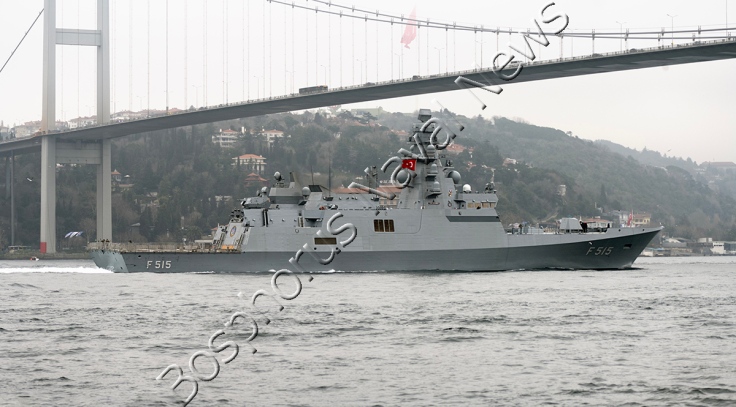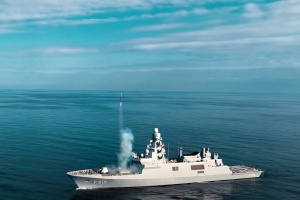
The deployment of the newest frigate of the Turkish Navy, TCG Istanbul, in the Black Sea between March 2nd and March 12th, 2024, marked a significant milestone. During this deployment, TCG Istanbul conducted the inaugural shipborne launch of the Hisar-D RF air defence missile from the MIDLAS vertical launcher system. This system was developed by Roketsan in response to the unavailability of the USA-made Mk-41 VLS system to the Turkish Navy, embodying the proverbial sentiment that “necessity is the mother of all inventions.”
This system is called MIDLAS and has two versions. The tactical one weighs 15,000 kilograms and the strike version weighs 18,000 kilograms unloaded. Roketsan does not tell the difference between these two versions. The tactical version will probably house Siper and Hisar-D air defense missiles while the strike version will house potential anti-ship and land attack missiles. While there is talk about the development of such missiles, their existence has not been confirmed.
 The test was more of a proof of concept type of test. The missile probably did not have a warhead. It did not hit a target, but that was not important. What was important was the fact that the missile left the launcher when the signal for firing came, that the correct doors of the silos were open, and that the initial launching of the missile went without problems. The creation of the mock target and the assignment of the missile to that target were performed by the Advent Combat Management software. The Cenk-S main search radar and the AKR-D fire control radar were able to provide the missile with the necessary information about the target and how to intercept it. The missile was able to clear the launcher and turn to a general heading successfully. All these small but necessarily intertwined series of actions were mentioned. Each of them had to perform as scripted; otherwise, the test would be a failure.
The test was more of a proof of concept type of test. The missile probably did not have a warhead. It did not hit a target, but that was not important. What was important was the fact that the missile left the launcher when the signal for firing came, that the correct doors of the silos were open, and that the initial launching of the missile went without problems. The creation of the mock target and the assignment of the missile to that target were performed by the Advent Combat Management software. The Cenk-S main search radar and the AKR-D fire control radar were able to provide the missile with the necessary information about the target and how to intercept it. The missile was able to clear the launcher and turn to a general heading successfully. All these small but necessarily intertwined series of actions were mentioned. Each of them had to perform as scripted; otherwise, the test would be a failure.
All these activities are the culmination of years of long research, development, testing, and production. Not just for the missile but for the vertical missile launcher system as well. The ships that have these on board are the result of years of hard work too. Sometimes it is easy to create a good working subsystem, say a fire control radar or a missile launcher. What is more difficult is to create a system of systems and make it work. That was proved on TCG Istanbul last week. This is an important milestone for the Turkish Navy and defence establishment.
As one French proverb says, “One swallow does not make spring.” How do we face a hard time bringing these tested systems to maturity and producing them for a long time constantly and sustainably so that the following 7 ships of the same class and other ships that will use the same VLS and missiles can perform as successfully forever as TCG Istanbul did last week
